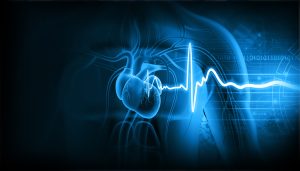Articles / Lung cancer screening program: practical tips for GPs

0 hours
These are activities that expand general practice knowledge, skills and attitudes, related to your scope of practice.
0.5 hours
These are activities that require reflection on feedback about your work.
0 hours
These are activities that use your work data to ensure quality results.
These are activities that expand general practice knowledge, skills and attitudes, related to your scope of practice.
These are activities that require reflection on feedback about your work.
These are activities that use your work data to ensure quality results.
Lung cancer is the fifth most commonly diagnosed cancer in Australia and the leading cause of cancer death, with a five-year survival rate of just 20%.
Almost one person dies from this disease every hour, and this equates to 150,000 years of life lost due to premature death, with worse outcomes for people from regional, remote and rural areas, as well as for people from an Aboriginal and Torres Strait Islander background.
However, the first new screening program in two decades is now underway. Dr Tracy Leong, respiratory and sleep physician at Austin Health, provides practical tips for GPs…
The poor outcomes for lung cancer are largely due to late-stage diagnosis.
Currently, only 11% of patients present with stage three disease, while over 40% present with stage four disease when the cancer has already spread beyond the lungs. Patients with stage four disease have just a 3% five-year relative survival rate.
However, two landmark randomised controlled trials overseas provide compelling evidence for screening. The National Lung Screening Trial in the United States and the Nelson Trial in Europe both show at least a 20% reduction in lung cancer deaths when participants underwent low-dose CT scanning.
Crucially, up to 70% of lung cancers were detected at an early stage through these screening programs.
If you haven’t already, register with the National Cancer Screening Register to enrol participants, view their screening status, and update patient records.
Identifying eligible patients will also be key.
Unlike other cancer screening programs, lung cancer screening requires targeted assessment based on age and smoking status.
Dr Leong says it’s important to review smoking history in clinical patient records to identify who might be eligible, “and establish electronic medical prompts to help you identify potential participants as they become eligible.”
The program has four fundamental eligibility criteria that must all be met.
Participants must:
To calculate pack years, divide the number of cigarettes per day by 20, and multiply that by the number of whole years of smoking.
Beyond meeting the eligibility criteria, it’s also important to make sure they are a suitable for a scan.
“They have to be able to lie flat for five minutes in a CT scanner. Their weight cannot exceed the capacity of the scanner so they must be under 200 kilograms. They must not have had a symptomatic lung infection in the last 12 weeks,” Dr Leong says.
“And if they have had a full CT test within the last 12 months or if they have another one planned for clinical reasons in the next three months, they need to allow this time to elapse before their screening CT.”
GPs can proactively organise screening through electronic medical record prompts, or recruit opportunistically when patients visit for unrelated issues.
Nurses and allied health professionals can also facilitate recruitment, or patients may self-identify after seeing information and initiate discussion with their GP.
Regardless of how the patient is recruited, GPs are responsible for enrolling them.
“It will be the GP’s responsibility to enrol the participant in the National Cancer Screening Register, either through the interface that’s been integrated with their clinic’s software, or through the health care provider portal if they’re an individual provider,” Dr Leong says.
Current smokers should be offered smoking cessation support at every clinical opportunity.
“The evidence is clear that screening plus prevention through smoking cessation has a synergistic benefit for overall survival,” Dr Leong says.
There are two Medicare item numbers — one for baseline low-dose CT scans and another for follow-up interval scans.
While GPs can use their usual practice forms, the program-specific form is preferred to ensure proper identification of screening scans. If you do use your usual form, be sure to note in the form that this is a lung cancer screening CT scan.
“And importantly, take 60 seconds to include the family history of lung cancer in any first-degree relative,” Dr Leong says.
This is used to calculate a patient’s PanCan risk that estimates the probability that a nodule seen on a screening scan is lung cancer.
Radiologists report screening scans using the nodule management protocol developed by the Royal Australian and New Zealand College of Radiologists. The report includes clinical information, technical study details, and most importantly, nodule findings. The report also includes recommended actions that GPs will need to discuss with the participant.
For baseline CT scans, radiologists use a modified version of the PanCan risk tool, while interval follow-up scans use a modified version of the lung RADS tool. Volumetric analysis is also used to measure solid nodules, as it’s very reliable for assess growth. When that’s not available, mean diameter is used.
The screening program classifies findings into six categories based on risk levels. Category one findings are deemed very low risk, encompassing 75% of participants, while category two represents low risk, affecting approximately 14% of participants.
Categories three and four represent low-to-moderate and moderate risk, respectively, involving around 8% of participants. These patients require follow-up scans at 24 months, 12 months, six months, or three months, depending on their category.
Categories five and six represent high-risk and very high-risk findings, affecting approximately 3% of participants.
“Close to 50% of patients with high-risk or very high-risk findings will turn out to have lung cancer,” Dr Leong notes.
In these cases, she recommends urgent referral to a respiratory physician or specialist linked to a lung cancer multidisciplinary team. The Lung Foundation Australia website has a geolocator to find the nearest lung cancer multidisciplinary team, though tertiary centres typically offer these services.
Around 75% of low-dose CT scans show additional findings beyond lung cancer screening results.
“These are defined as actionable additional findings, meaning that there is a clear opportunity to improve the health outcome for that participant, either by further investigation, additional clinical management, or both,” Dr Leong explains.
The Royal Australian and New Zealand College of Radiologists has developed guidance covering 26 specific findings and corresponding management recommendations.
The Lung Foundation Australia and the Daffodil Centre have developed comprehensive online learning modules specifically for healthcare providers.
The Department of Health, Disability and Ageing website also has a bank of resources
Register on the NACCHO Website to receive notifications when resources for Aboriginal and Torres Strait Islander people become available.
This article was based on a lecture recorded for Healthed by Dr Tracy Leong in June 2025. You can listen here.
Based on this educational activity, complete these learning modules to gain additional CPD.

Allergen Introduction – Practical Tips for GPs

Oral Contraception Update

What do we do With High Triglycerides?

An Update on Heart Failure in Primary Care

Very overestimated
Moderately/slightly overestimated
Quite accurate
Moderately/slightly underestimated
Very underestimated
Listen to expert interviews.
Click to open in a new tab
Browse the latest articles from Healthed.
Once you confirm you’ve read this article you can complete a Patient Case Review to earn 0.5 hours CPD in the Reviewing Performance (RP) category.
Select ‘Confirm & learn‘ when you have read this article in its entirety and you will be taken to begin your Patient Case Review.





